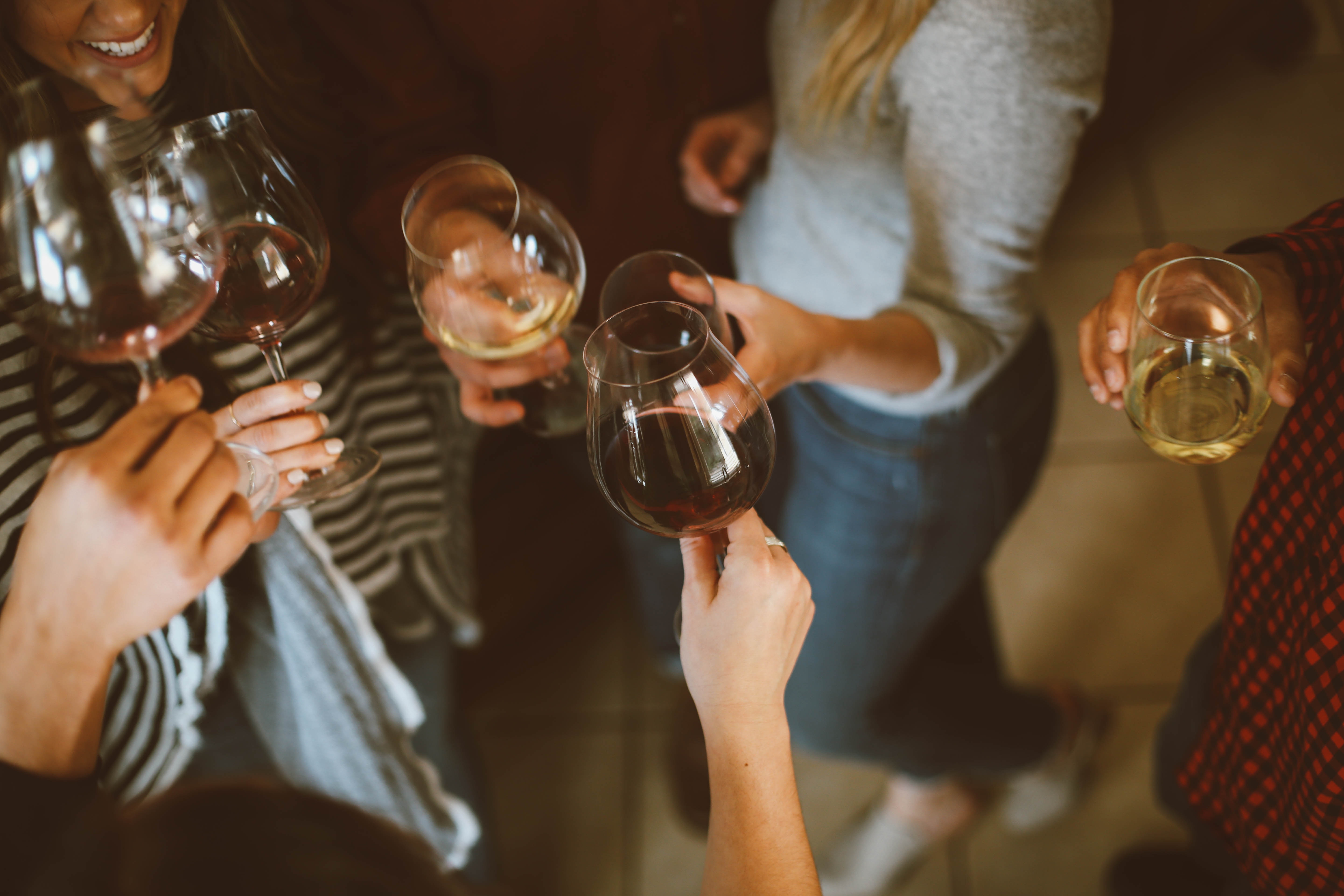3 Proven ways for increasing tasting room revenue in 2019
The importance of the tasting room has recently once more been underlined, this time by the 2019 SVB Wine Report showing that 42% of the average wineries total revenue come from tasting room sales. So what are some strategies to improve revenue?
In this article we will dive deeper in to 3 proven strategies to directly impact your tasting room bottom line. Make sure you scroll down to the end, because we’ve saved the best for last (hint: it’s 3 more bonus tips.)
This blog is a 20-minute read. Don’t have 20 minutes? Dowload the article + the 3 bonus tips as a PDF and read it later.
Sales training
The first and probably most obvious tactic to take your tasting room sales game to the next level is by going through a sales training or enrolling your staff in a training.
Sales is a learnable skill and these days there are countless options out there to get the right training. Even if you happen to be in a remote location, plenty of crafty trainers have now moved their resources online for anyone to access. This leaves you with absolutely no excuses to skip on upgrading your sales pitch.
When deciding on picking a trainer there are a few key factors to keep in mind. One expert on this is Lindsay Kana who is the director of Sales&Marketing at VingDirect.
Since joining the Ving Team, she has worked closely with family wineries to help them increase their DTC Sales. Her favorite project is VingDirect’s very own Direct to Consumer Assessment! She earned a Bachelor’s degree in 2006 from Texas State University and she lives near Austin, Texas with her husband, two daughters, and a yorkie-poo.
Lindsay Kana says:
“Look for someone who has experience with training groups, and has created and delivered trainings for the wine industry. You want someone who is enthusiastic, knowledgeable, and has experience with delivering education in a fun, meaningful way. It’s important that your staff connects with them and finds value in their content and teaching style.
I believe it’s also important to find someone who works for a company that is established and has provided value to the wine industry. If the trainer is providing online training, it’s important that they are familiar with all of the digital tools and education platforms and technology that exist today. Research, and find the best fit for your winery and staff…and remember education should be ongoing and FUN!”
VingDirect services include wine club assessment and improvement, mystery tasting programs, DTC Assessments, and online and in person sales training. Visit VingDirect here to learn more about the opportunities for you.
After you’ve made a decision on the trainer you’re going with, the next step is deciding what channel works best for your situation. Do you frequently hire new people? Then perhaps it might make sense to pay for an online course that you can access whenever you want, rather than on-site training.
Online training
We have indexed some of the best options available for online DTC wine sales training to save you from the trouble of going through the process yourself:
On-site sales training
On-site training arguably has a few advantages over online training in that it’s more personal and tailored-fit to your specific situation. To get the most out of your sales training make sure you prepare beforehand. In the end these trainings are a big investment, and this investment is being made for a reason.
A good trainer will help you prepare, probably by sending you a questionnaire, but there is some homework you can start with right now that will help you and your team get the most out of the opportunity.Get your mindset right
Some more experienced employees might look at sales training as the cost of working in a retail environment, but this isn’t the right approach. Make sure everyone that will participate acknowledges they don’t have all the answers. Everyone, regardless of amount of experience of number of sales, can learn something new.
A growth mindset is essential for getting the most out of anything, including sales training.
Get people excited. As a leader it’s your responsibility to get your team engaged in the activities you are undertaking as a team, so make sure you are taking on an active role in the process leading up to the event as well as during.
This ties in to the next point, which is giving it your all. Don’t just show up to show your face, but actively participate and lead by example. Ask questions, answer them, and don’t be afraid to speak up when things are not clear.
Lastly minimize distractions by informing everyone when you’ll be joining the training and set your status to ‘do not disturb’.
Don’t be afraid to step out of your comfort zone. You might be used to interacting with customers all day or chatting about the weather with colleagues but going everyone has a comfort zone and going through a group activity is likely to test yours.
Make an effort to step out of your comfort zone by collaborating with others you might otherwise not engage with too often, and don’t be afraid to talk about your personal challenges in your daily activities at work.
Preparations beforehand
If not already provided for you, try and get an outline of the session and the topics that will be touched on by the trainer. That way you can work out some questions beforehand or do some research.
Set goals. This is as important in a sales training as it is in general life or managing your tasting room. What are you hoping to learn from this session? What is the biggest struggle you are facing most often?
Make sure to also focus on that last part. In the end it’s always most profitable to fix smaller issues that come up daily than it is to try and tackle a big or unique sales obstacle that only comes up once every 2 or 3 years.
Know and understand your customer. Take some time to put down key characteristics of your main customer. What are common objections for not buying your products? Is it price? Or are there other factors in play?
The more you know about your customer the better you will be able to understand them, which will help you ask better questions to your sales trainer as well as ultimately sell more.
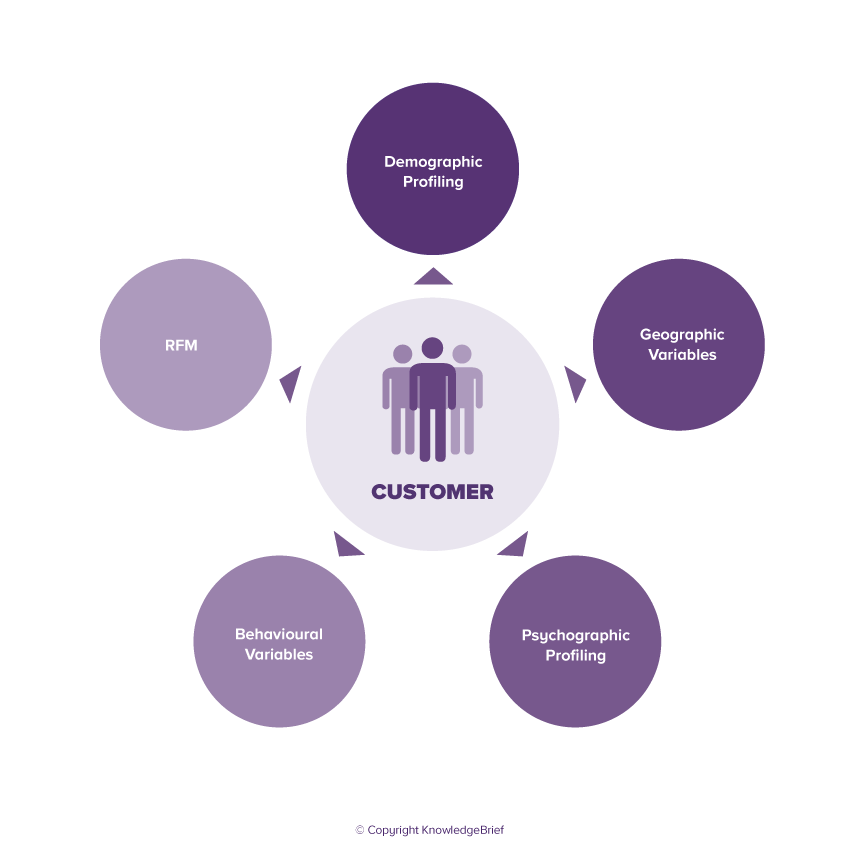
Source: KB Manage
One of the most powerful lessons you could learn from a sales training is to know which issues your customers are facing, and how to solve them.
During the training
Relevance is critical. Therefore, make learning situational, real-world based. By making things practical you take out any guesswork your sales reps might have on how to apply this in their daily activities. This means having the training done in your actual tasting room rather than any other room.
By doing this you will not only making the teachings more actionable, but the attendees will also feel more at ease and should be better able to come up with relevant questions.
A relevant sales training should give a “just in time, just for me” feeling.
Focus on the ‘why’ in addition to the ‘what’. While it’s great to learn more about the tried and tested sales techniques that will work for your particular situation, knowing the ‘why’ behind these sales techniques will help you and your staff gain a deeper understanding of the factors driving a tasting room its success and failure.
This way you get more value out of your training as employees will be able to adjust the techniques to specific challenges and situations that come up rather than trying to learn a new trick for each challenge.
Don’t feel stupid saying ‘I don’t know’. This ties back to the mindset part and leading by example. Not even the most experienced tasting room manager has all the answers, and by acknowledging this you create an environment where people feel free to talk about their individual challenges.
Just keep the end goal in mind and try and get there by all means necessary. Even if it means having to sacrifice yourself a little.
After the training
Now that the hardest part is over it’s time to make sure you’re getting the most bang for your buck and your staff feels like they got the most out of this opportunity.
This is the time to bring out the wine, if you hadn’t already done so, and toast to a successful training. But also make sure not to forget the following steps.
Leverage technology
If your trainer allows it make sure to record the training. Some trainers will be hesitant to allow this but you could sell it to them (pun intended) as a great opportunity for them as well to create authentic social media or promotion content for their business.
Make clear to them you will only use the recordings for internal training purposes and most trainers should have no objections to this.
Recording the training is important because research suggests that 79% of what is learned, regardless of quality or delivery, is forgotten within days and weeks. Having a knowledge base for your staff to refer back to will help tremendously in increasing the value of your investment.
Moreover, any future hires that are coming in to the company can now be trained on-site without any additional investment necessary besides their time.
Internal Communications
Often overlooked, but ever-important. Whenever you’re trying to change something, make sure everyone in your organization know about what you’re trying to accomplish.
Even if your entire team was present at the training event it will still help to send out the main takeaways from the training and the goals set together. Additional benefit is that this is an easy way to keep everyone accountable and to check up on progress made.
What will help in keeping everyone engaged and involved is to clearly write down the (revenue) goals that were set, the steps and tactics agreed on to get there, and the daily tasks that come with this. Then turn this list in to a checklist that can be placed in a visible spot in the tasting room, out of sight of customers of course.
Now while in the end the responsibility for carrying these checks out should always be with the tasting room manager, delegating this to more junior staff is a proven way to increase involvement and to stimulate growth.
It’s a great way to show your most trusted employees how important they are and how you’re not afraid to give them responsibilities, while at the same time keeping the team accountable.
Need some inspiration? Why not use our example list?
You can DOWNLOAD it here (.xlsx)
Improve Retail Presentation
The retail area of a tasting room is by many seen as the easiest way to improve revenue and sales.
What’s best about these areas is the fact that if customers have had a great experience, they can go out on their own and pick items to add to their purchase. This provides wineries with an easy revenue stream which can really add to the bottom line. So how do you make the most of this opportunity?
There are some obvious points that every tasting room manager will know of but that we do need to touch on, but we will also look at more advanced tactics to increase the effectiveness of your retail area.
Replenishment
How are you taking care of replenishment? Are there procedures in place? While there probably are, how do you check up on this? Because you can have the fanciest POS that will allow you to print out your sales and replenish sold items, but what happens when you’re away?
It’s important to make sure each employee follows up with their replenishment duties even when things are busy and hectic. To make sure this happens it can help to have a list in place that employees need to sign after they have replenished the retail area.
Here’s an example for what such a list could look like. Want to use it? Download it below.
DOWNLOAD the list from here and print it for your tasting room
quick tip: does writing things down take too long? Take pictures of empty spaces instead to speed things up
Items that are in the storage area will never get sold unless customers specifically ask for them, so make sure employees understand the importance of keeping the shelves filled throughout the day and especially during the busy moments.
One way of organizing this is to write down who will take care of replenishment at which point during the day and making sure the person responsible will sign that list once the task is completed.
Presentation
Visual presentation is (almost) everything in retail. Attention to detail is vital – from cleanliness to unique and relevant product offerings that compliment your brand’s story. Dust or disorganization are big turn offs for anyone as it’s a clear sign of disinterest and a lack of passion.
Practice with creating different types of displays that are compelling and that complete the story that you’re telling to people once they visit your location.
To put it simple: if you’re trying to sell expensive wine, don’t just throw some random wine accessories together and expect people to hand you their money.
On the contrary rather, as a neglected and low-quality retail area can turn people away from taking out their wallets and spend on your core products as well.
Perhaps most important to consider in terms of presentation is product performance. Take time to regularly review product performance to inform your merchandising decisions.
What’s important to take in mind is the various walking routes customers might take and how that affects what they’ll see first or most frequently.
Big retail companies such as Zara use their camera systems to give them a heatmap of their floor, which is an indication of walking routes people most often use. With this map in hand, their staff will then place their most popular items at the busiest points in the store.
Not only that, it will also give them ideas of which parts of the store are not well accessible and they can change their furniture arrangements accordingly.
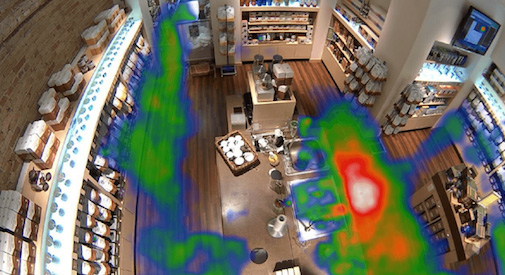
Example of retail heatmap, image by Matryxconsulting
While that is probably too big of an ask for 9.9 out of 10 tasting rooms out there it can serve as a lesson on just how important and serious this is. If you have the ability to do so, consider moving your furniture around in different setting which allow you to place your best-selling items in more visible spots.
Action point: next time you’re entering your tasting room, try seeing things from a customer point of view. Which areas are you naturally drawn to? What is the first thing you’re seeing? And how easy is it to walk around?
To tie these two together make sure you present your best-sellers in the best way possible. One way of doing so is ‘doubling’ them – displaying your best items at more than one point of the shop. Another way could be to reserve a full shelf for one type of wine but try different ways of stacking the bottles.
No one likes looking at a monotone shelf, but by lying down part of the bottles and standing up the rest you can still create a compelling display while increasing the amount of units you have on the floor for this item.
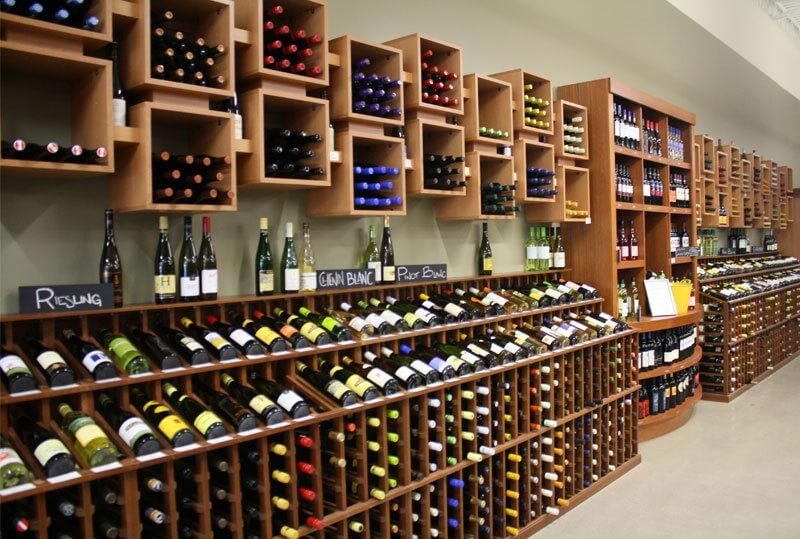
Source: Vigilant Inc.
Product Range
Ever been to a high-end restaurant with crappy toilets? Me neither.
The most difficult part of picking the right composition of your assortment is having products match your brand.
Rather than assembling random items, take a moment to write down what it is you want your guests to experience when they visit you. What is it you want customers to feel when it comes to your brand? Your location should breathe that message at every touchpoint, from the toilets to the products in the retail area.
Another factor to consider is seasonality. While it may be tempting to ‘pick and forget’ when it comes to your assortment, frequently rotating items to match the current seasons or holidays is a great way of increasing customer engagement and providing them with that ‘wow’ experience we’re all aiming for.
Stock management
One key component to account for is inventory-to-sales ratio. It’s an absolute waste of money to have piles of units sitting in your stockroom, while nothing is more painful than running out of your best selling items the day before an important event. That is why keeping score is important.
Most POS systems will automatically give you insights in to best selling items so make sure you make a habit out of reviewing this information at least once a week, and cross-check this with your inventory.
A good way of going about this is looking at the rotation time – how long it will take for you to sell out if you keep selling at the current pace.
Units you have in stock / Units sold per Day/Week/Months
=
Number of Days/Weeks/Months your current stock will last
If your rotation is too high, you might want to consider using excess stock as incentives for customers to trade up, or if you use branded tools consider giving them away to loyal customers.Product pairing
Make sure you learn which products are frequently bought together, or which products you believe go well together. If the same pairs often get bought consider displaying them together and make sure you communicate with your sales staff about the trend you’re seeing.
That way they can suggest the pair to customers they’re in contact with and it’s a great way of making them feel involved and responsible.
Focusing on Average Sale Value
What if all your customers just bought more? Yep, life could be that easy.
In 2017 the famous SVB Wine Report showed that tasting-room revenue was up countrywide despite declining visitor numbers, but what was driving that higher revenue is improved average purchases. Wineries are simply selling more per transaction and this seems to be the best strategy going forward.
Knowing which items move the needle for your business is vital in effectively using this tactic to grow your revenue. In order to effectively cross-sell you need to not only be aware of your best-sellers but also have a strategy in place for having your entire staff know about this as well.
A great way of doing so is by quizzing them before their shift starts or by giving a small presentation about which items have sold the best over the last period to keep things fresh in their mind.
Bundling your best-sellers is a great way of increasing average order value. For example, you can provide a ‘buy 3 and get a free gift’.
By incentivizing customers to trade up by giving away branded items when a certain threshold is crossed you can not only increase revenue but increase return visitors and word-of-mouth referrals as well.
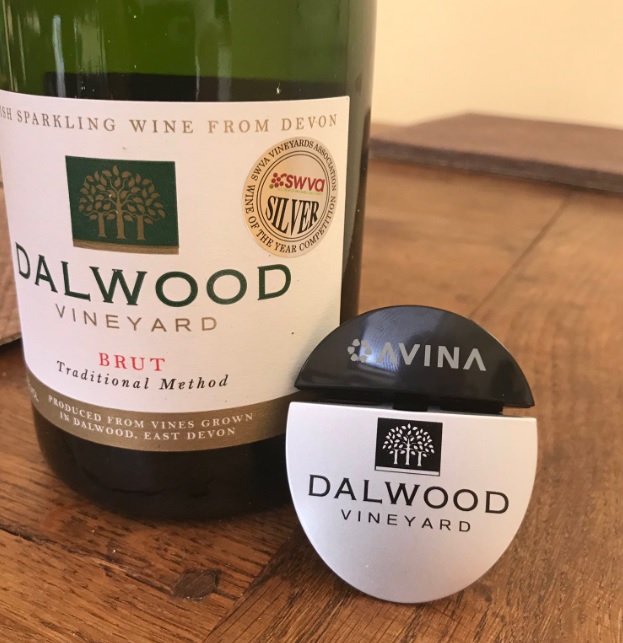
Image: Example of branded sparkling wine stoppers used by Dalwood Vineyards.
Having your brand in peoples hands and homes is a great way of staying top-of-mind. And if the quality of these tools is a good enough representation of your brand, you’ll end up being a topic of conversation at social gatherings.
Not convinced yet? Get this. Did you know that 83% of consumers say they either completely or somewhat trust recommendations from family, colleagues, and friends about products and services – making these recommendations the highest ranked source for trustworthiness. (Nielsen)
This falls perfectly into the strong trend in consumer behaviour which is more focused on experience and building a connection with a brand, rather than just comparing features such as price.
Building a brand that will turn customers in to fans is not only important in 2019, it’s vital for the survival of any business. Stocking up on high-quality, branded wine accessories is an investment that will pay for itself in brand equity and customer retention.
Having your business card in their homes in the form of wine accessories will enable great times to be a result of your brand.
Do you want 3 more exclusive tips to raise Tasting Room revenue in 2019? Including one highly unique tip that has transformed the way many people think about their business?
Download the Tasting Room Revenue Boost package that includes:
– 3 additional tips that are likely to help you increase tasting room revenue, even if you’re already making your sales targets.
– 1 highly unique tip that could transform the way you’re approaching business, and..
– ..the added benefit of receiving our regular tasting room growth tips, interviews, and more right in your inbox.
